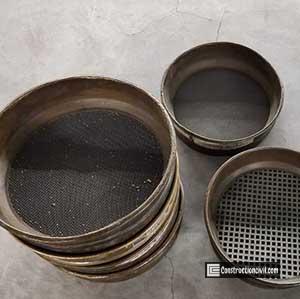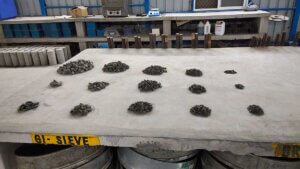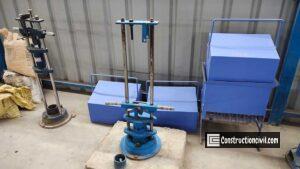Sieve analysis for fine aggregate is a procedure used in civil engineering to determine the fine aggregate’s fineness modulus and grain size distribution by allowing the material to pass through a series of sieves of progressively smaller mesh sizes. After sieving the fine aggregate, weighing the retained amount of material in each sieve as a fraction of the whole mass and the entire process is known as sieve analysis for fine aggregate.
Also, Read: Aggregate Impact Test Procedure for Determining AIV as Per IS 2386 Part-4
What is Fine Aggregate?
Fine aggregate is a granular material of size less than 4.75 mm called fine aggregate. Fine aggregates include the following materials like natural sand, crushed stone sand, crushed gravel sand etc.
- Natural Sand: Sand resulting from the natural rock disintegration and deposited by streams or glacial, known as natural sand.
- Crushed Stone Sand: Fine aggregate created by crushing of hard stone, known as crushed stone sand.
- Crushed Gravel Sand: Fine aggregate made by crushing natural gravel, known as crushed gravel sand.
Also, Read: Sieve Analysis of Coarse Aggregate Test – Construction Civil
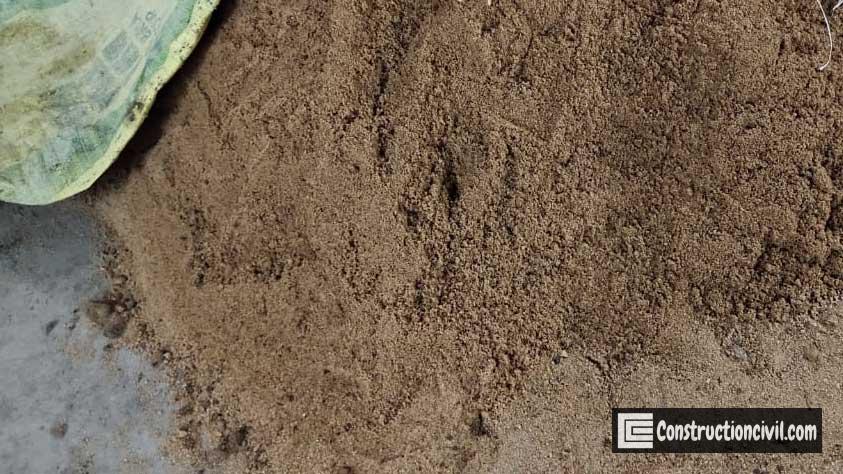
Also, Read: Properties of Concrete – Introduction to Good Concrete Practice
Purpose of Sieve Analysis For Fine Aggregate:
- Sieve analysis for fine aggregate test help to determine the fineness modulus and grain size distribution of fine aggregates.
- The sieve analysis of fine aggregate indicates the size distribution of fine aggregate particles in a given fine aggregate sample.
- The fineness modulus is the indication of the mean size of the particles.
- The fineness modulus is used to classify the fine aggregate into four zones, and a change in the fineness modulus value of fine aggregate indicates a change in the source of material, which will affect the workability of concrete.
Sieve Analysis of Fine Aggregate As Per IS Code:
Test Apparatus:
Sieve analysis for fine aggregate requires the following test apparatus.
- I.S. Sieve (size 10mm, 4.75 mm, 2.36 mm, 1.18 mm, 600 microns, 300 microns and 150 microns with lid and pan)
- Oven
- Balance 0.01 g accuracy
- Tray
- Brush
- Mechanical sieve shaker
Also, Read: Design Mix of Concrete – Detailed Procedure With Calculation
Sieve Analysis For Fine Aggregate:
The grading of fine aggregate should be as per the specified limit mentioned in the following table and shall be defined as fine aggregate of grading Zones I, II, III and IV.
As per MORTH specification, fine aggregate/sand for structural concrete shall conform to the following grading requirements:

Also, Read: Factors Affecting Strength of Concrete – Construction Civil
- When the grading falls outside the specified limits of any respective grading zone of sieves other than 600μm by an amount not exceeding 5% for a particular sieve size and subject to a cumulative amount of 10%, it shall be considered as falling within that grading zone.
- This tolerance shall not be applicable for the percentage passing through 600μm IS sieve or for the percentage passing any other sieve size on the coarser limit of Grading zone I or the finer limit of zone IV.
- The limit on 150μm IS sieve for crushed stone fine aggregate is increased to 20%, which does not affect the 5% allowance permitted.
Sieve Analysis of Fine Aggregate Procedure:
- Take 1 kg of representative sample out of 10 kilograms with the help of the quartering method.
- Arrange the sieve set in such a manner so that the largest size sieve should be at the topmost and the smallest one at the bottom(10mm sieve at the top and all other sizes of sieves are arranged in decreasing manner. i.e., 4.75mm, 2.36 mm, 1.18mm, 600 µm, 300 µm, 150 µm), and below 150µm sieve, a pan is fixed.
- After putting 1kg of the sample into the topmost sieve, close the lid, and then the whole sieve set is arranged in a sieve shaker.
- Sieve analysis for fine aggregate is carried out by sieving the sample aggregate in a sieve shaker for not less than l0 minutes.
- At the end of sieving, find the mass of fine aggregate material retained on each sieve.
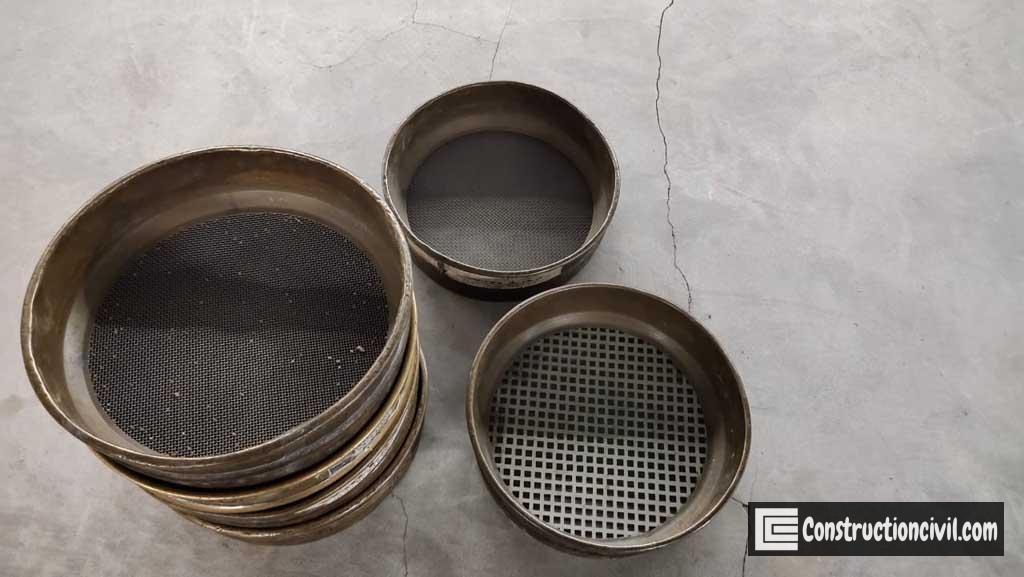
Also, Read: Concrete Ingredients – Important Properties and Tests
Sieve Analysis of Coarse Aggregate Lab Report:
Calculations are presented in the observation, and final results are indicated in the tabular column. For a better understanding, please follow the sieve analysis of coarse aggregate lab report.
| Sieve Size (mm) | Retained Wt.(gm) | Retained % (Col.IIx100/W) | Cumulative Retained % | % of Passing (100-col.IV) | Specified Limit as per MORTH | Specified Limit as per MORTH | Specified Limit as per MORTH |
| I | II | III | IV | V | Zone-I | Zone-II | Zone-III |
| 10 | 0 | 0 | 0 | 100 | 100 | 100 | 100 |
| 4.75 | 24 | 2.40 | 2.40 | 97.60 | 90-100 | 90-100 | 90-100 |
| 2.36 | 56 | 5.60 | 8.00 | 92.00 | 60-95 | 75-100 | 85-100 |
| 1.18 | 136 | 13.60 | 21.60 | 78.40 | 30-70 | 55-90 | 75-100 |
| 0.600 | 272 | 27.20 | 48.80 | 51.20 | 15-34 | 35-59 | 60-79 |
| 0.300 | 365 | 36.50 | 85.30 | 14.70 | 05-20 | 8-30 | 12-40 |
| 0.150 | 134 | 13.40 | 98.70 | 1.30 | 0-10 | 0-10 | 0-10 |
| Pan | 13 | – | – | – |
Also, Read: Laboratory Test on soil – Procedures and Objective
The Fineness Modulus of Fine Aggregate:
As per Clause number 1008 of MORTH-5th Revision, the fineness modulus of fine aggregate should be between 2.0 to 3.5.
(Summation of cumulative % retained) /100 = (264.8/100) = 2.65
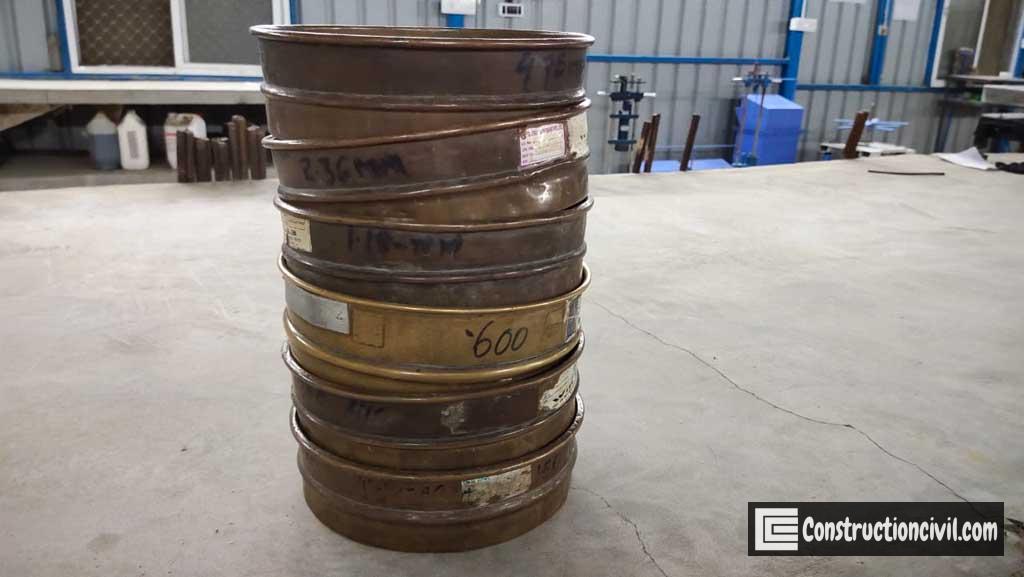
Also, Read: SPT Test for Soil Procedure, Refusal Conditions & Correction
Fine aggregate For Structural Concrete:
- For plain and reinforced or prestressed concrete works, fine aggregate shall consist of clean, hard, strong and durable pieces of crushed stone, crushed gravel, or a suitable mixture of natural sand.
- Fine aggregate confirming with the requirements of any grading zone as per the above table is suitable for concrete mix, but the quality of produced concrete will depend upon several factors, including proportions.
- As the grading of fine aggregate becomes progressively finer from grading zones I to IV, the fine aggregate to coarse aggregate ratio is also reduced accordingly. However, the most suitable fine to the coarse ratio for any particular mix will depend upon the grading, shape of particle and surface texture of both fine and coarse aggregates.
- As per IS 383, it is recommended that fine aggregate conforming to grading zone IV should not be used in reinforced concrete without performing the required test to ascertain the suitability of the proposed mix proportions.
- Fine aggregate shall not include dust, lumps, soft or flaky materials, mica or other harmful materials in such quantities as to reduce the concrete’s strength and durability or attack the embedded reinforcement.
- Fine aggregate having a positive alkali-silica reaction should not be used in structural concrete.
- For masonry work, fine aggregate shall conform to the requirements described in IS:2116.
Code Reference For Sieve Analysis of Coarse Aggregate:
- IS-386 Part 4 Test of aggregate for concrete, mechanical properties
- IS-460: Specification for test sieve
- IS-383: Coarse and Fine Aggregate for Concrete — Specification
